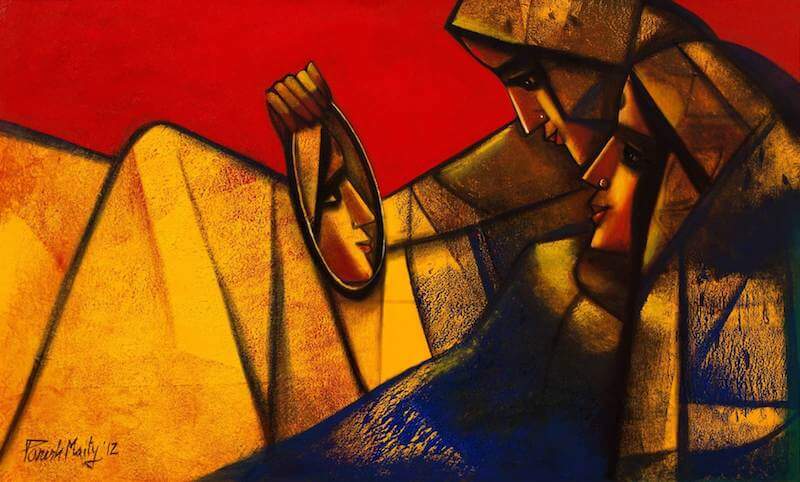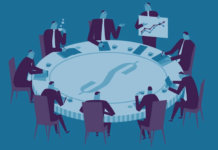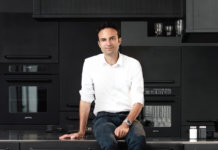Interview with Harsh Goenka, Chairman of RPG Enterprises, India
RPG Enterprises is a fifth generation family-owned conglomerate and one of the largest industrial groups in India. The group is a major player in power generation and distribution, information technology, infrastructure, tyres, plantations and pharmaceuticals. In 1988 Harsh Goenka was appointed chairman of the company. Building on the entrepreneurial heritage of his grandfather and father, Goenka dedicated his organisational skills to creating a moral structure for the organisation, which would shift the focus towards human capital with the aim to create a work atmosphere of excitement and motivation. He applied considerable efforts developing company employees and still enjoys being involved in decision-making processes though management is delegated to the current CEO. When Goenka first became chairman of the board he brought in an international consultant to help define the core activities of the business. Thanks to this intervention the family group consolidated from 18 to 6 business streams. While RPG Enterprises used to be an India-centric group, today 43 % of the group’s business comes from abroad and has managed to penetrate markets in Latin America, Southeast Asia and the Middle East.
To most, Harsh Goenka is a business tycoon known for taking RPG Enterprises to the next level. But there is a deeper layer to this exceptional businessman; Goenka is one of India’s most ardent art lovers. With a collection of over 6,000 pieces he may well be recognised as one of the greatest collectors in the country. Tharawat magazine speaks to Harsh Goenka about his business, his love for art, and the meaning of culture for Indian society.
What are your business’ core values?
Our most important core value is that we value relationships. And we believe in people as our biggest asset. The second core value is that we operate on mutual trust. More than the written word, the commitment to verbal agreements is very important to us. There is a great amount of dedication and independence given to the whole organisation. The third core value is our belief in transparency and we strive to create a culture of excitement in our organisation. My goal is not to be the biggest industrial company in India, but create the most exciting workplace in the country.
Is your appreciation for the arts the result of a personal passion or does it derive from familial tradition?
My family is from the city of Calcutta, which is known for its passion for culture and the arts. We always had artists, authors and classical musicians coming to our house. My father had a collection of Indian miniatures. And my job as a young boy was to catalogue them. When I grew up I started having a dislike of miniatures, because for me, it was a very tedious task. On the other hand, my interest for contemporary art blossomed due to the many artists who came to our house and their discussions. There were always fascinating debates going on and I think this is when my love affair with art began.

[ms-protect-content id=”4069, 4129″]
How would you define your involvement in the arts scene?
95% of my collection is Indian art, along with a few works from Pakistan and Bangladesh. To me, the art world reflects a hotbed of intellectual issues. Every piece of art deals with politics, philosophy, emotions and is an attempt to grapple with the meaning of life. When I moved to Mumbai, I discovered the need to decorate my walls and that’s when I first bought my paintings. My passion blossomed and I continued to collect, sometimes purposefully and sometimes driven by want. Today, as a collector, I buy the art that I enjoy, understand and find fulfilling, whether in the form of paintings, sculptures or a fine piece of furniture. In fact, if you look at my art collection, it is not complete. Many critics who see my collection have said that there are still gaps in my collection. I answer that this is the quirkiness of the individual. I am not trying to make a statement to the market. I collect what I like and enjoy.
One of the things that I enjoy most is to collect self-portraits of artists. I own nearly 800 self-portraits. Sometimes these portraits depict one artist painting another. I always wanted to understand the mind of the artist. By nature, they are somewhat secluded, and I want to discover who they are and what their function in society really is. Together with a friend I also started an art camp. WE started about 20 years ago and in the beginning we had six artists. Today, it’s an annual camp with over 23 artists. I get to talk to them, see their techniques and the skills that they use. This camp really helps me to understand the psyche of the artist and they always leave a self-portrait behind.
Another particular aspect that I have enjoyed is collecting works of Mother Theresa. She has always been an icon to me. I’ve always admired the selfless work that she has done. But what I collect varies a lot. Earlier, I was fond of very violent and emotional works. Now I find myself a little changed: I tend to be much more peaceful, much more serene and choose art accordingly. I guess it’s to do with age and it’s interesting to see these changes in your own collection.
Today, a lot of people are investing in art. This is when a commercialisation takes place, which is not right for the creative side. I never enjoyed this kind of relationship with the arts. I always tell friends who ask me for advice, to buy what they like and what they will enjoy. Art is not meant to be an investment. It should give you happiness and joy when you look at it.
Why is your collecting art so important to you?
In business you’re always thinking of money, because your purpose is to create wealth. Collecting art allows you to enter a different world, which is non-commercial. It is a community. My favourite artist is Salvador Dalí because of the imagination in his work, the wackiness, and the quality of magic. My collection is now so large that it is hard to find room for it.
Do you encourage the family’s next generation to take an interest in art collecting?
I do encourage my son and daughter to become passionate about art, but I don’t think they respond to art like I do. They have their own likes and dislikes. This is unfortunate for me because I do want the legacy to carry on. When they were young, I would take them to exhibitions once in a while. But they have other passions.
There are many family-owned businesses around the world that collect art. How would you characterise the varying motives for doing so?
There are two aspects: There are people who like collecting because they love art. And I think many families also invest in art. My own view is that the objective should be to further culture by supporting the arts. It also helps understand people and situations better. In India, I hardly find any of my colleagues, businessmen, involved in art.
As a business group we actively promote the arts and culture. We not only have the annual art camps, I hold a large art show every year where I bring in the new pieces and all proceeds go to the artists. I also promote a lot of young artists and sponsor them.
We also just had new legislation put through in India, whereby companies are required to donate two percent of their profits to the community. I hope that much of this will go into culture and the arts. I think, there’s a change happening and people are becoming more aware of the divide between the rich and the poor and are finding ways to tackle this. This is why the government has decided that people must contribute to the balance. I have been involved in a number of the national culture funds and we are creating our foundation helping artists through sponsorship or exhibitions. This gives artists a home for collaborative work.
I’m trying to take art to the people by having exhibitions and by supporting the new initiative to place public sculptures into the city of Bombay. And we have permission now, to place important pieces at street crossings in various places of importance in the city. In India we face many problems at the most essential levels such as livelihood and education and these are important to tackle. I think that culture and the arts is an equally important tool to bring about balance in society.
Tharawat Magazine, Issue 20, 2013
[/ms-protect-content]













